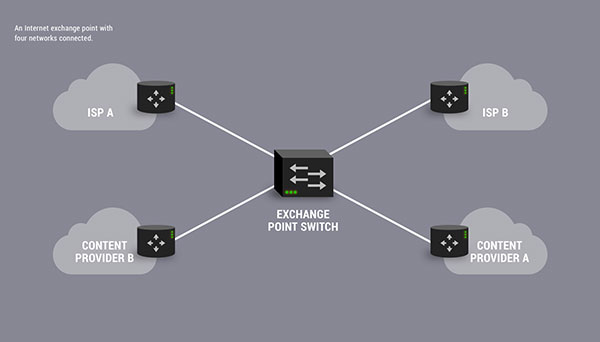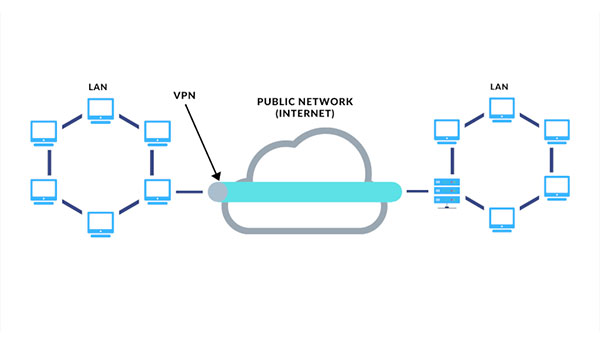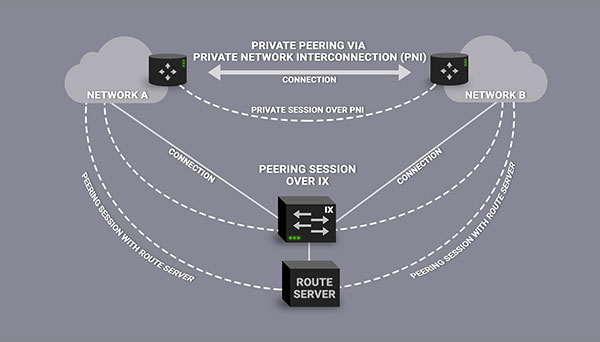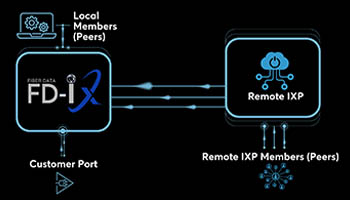Introduction:
In the vast realm of the internet, where data flows ceaselessly across networks and continents, the concept of aggregating traffic through an Internet Exchange (IX) emerges as a transformative force. An Internet Exchange acts as a digital crossroads where different networks converge, facilitating the exchange of data with remarkable efficiency. In this blog, we will explore the numerous advantages of aggregating traffic through an Internet Exchange and how it contributes to a faster, more resilient, and cost-effective internet ecosystem.
- Enhanced Connectivity and Reduced Latency: By bringing together multiple networks within a centralized hub, an Internet Exchange minimizes the physical distance that data needs to travel between various networks. This reduction in latency translates into faster and more responsive internet services for end-users. The direct, low-latency connections fostered by an Internet Exchange enhance overall connectivity, ensuring a smoother and more efficient data exchange.
- Improved Network Performance: Aggregating traffic through an Internet Exchange allows networks to bypass the public internet, utilizing private and direct connections instead. This results in improved network performance, reduced congestion, and enhanced reliability. The dedicated paths created within the exchange environment contribute to a more stable and efficient flow of data, minimizing the risk of bottlenecks and packet loss.
- Cost Savings for Network Operators: Internet Service Providers (ISPs) and other network operators can benefit significantly from traffic aggregation through an Internet Exchange in terms of cost savings. The direct connections established within the exchange environment eliminate the need to route traffic through third-party networks, reducing transit costs and operational expenses. This cost-efficient model is particularly advantageous for smaller ISPs and emerging networks.
- Scalability and Flexibility: Internet Exchanges provide a scalable infrastructure that accommodates the evolving needs of network operators. As traffic volumes grow, the exchange framework allows for seamless scaling, ensuring that networks can adapt to increasing demands without compromising on performance or efficiency. The flexibility offered by an Internet Exchange is crucial in the dynamic landscape of today’s digital ecosystem.
- Enhanced Security and Control: Aggregating traffic through an Internet Exchange enhances security by offering a controlled and monitored environment for data exchange. Network operators can implement robust security measures within the exchange, safeguarding against potential threats and unauthorized access. The increased control over data traffic contributes to a more secure and reliable network infrastructure.
- Global Reach and Interconnectivity: Internet Exchanges serve as global hubs that attract diverse networks from around the world. This interconnectivity fosters collaboration and data exchange on an international scale. Networks can leverage the vast reach of an Internet Exchange to establish direct connections with peers globally, enabling a truly interconnected and collaborative internet ecosystem.
Conclusion:
In the intricate web of the internet, the aggregation of traffic through an Internet Exchange emerges as a cornerstone for a faster, more efficient, and cost-effective digital experience. The benefits of enhanced connectivity, improved network performance, cost savings, scalability, security, and global interconnectivity underscore the pivotal role that Internet Exchanges play in shaping the future of our interconnected world. As we navigate the digital landscape, the aggregation of traffic through Internet Exchanges stands as a testament to the power of collaboration, efficiency, and innovation in fostering a more resilient and responsive internet ecosystem.





















